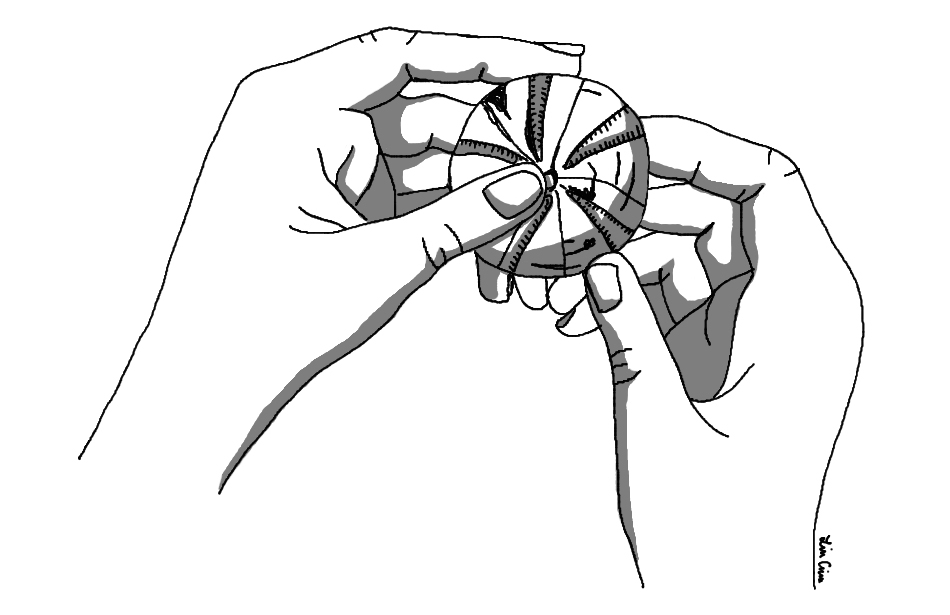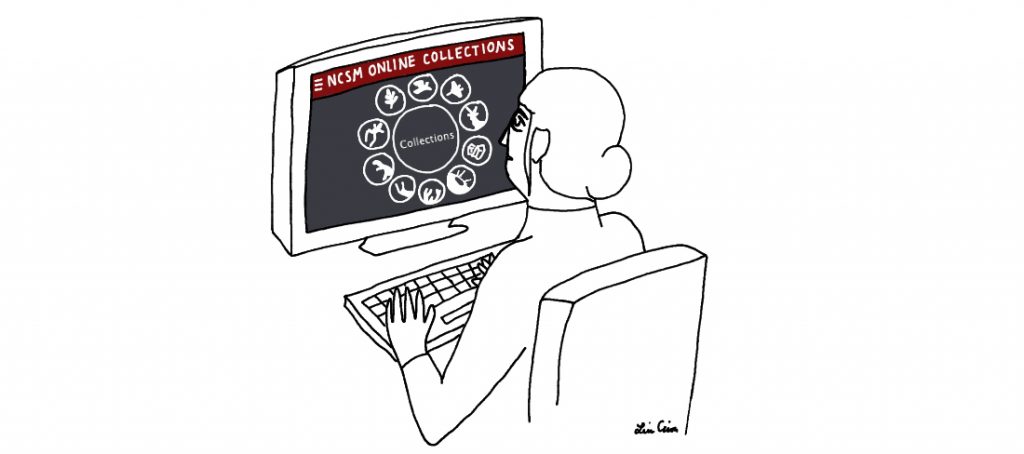Collections research at NCMNS and Beyond
For immediate release ‐ December 17, 2020
Contact: Jessica Wackes, 919.707.9850. Images available upon request
Visiting the public exhibits of NCMNS opens one’s eyes to thousands of natural history specimens—from butterfly chrysalises to a full blue whale skeleton. But did you know there are just as many specimens that go unseen to the public? Unknown to most is that there are many more in an unimposing tan building on the eastern edge of the Prairie Ridge Ecostation. This building is home to the NCMNS fluid collections, which contain over two million fish, reptile, amphibian, and invertebrate specimens! These specimens, collected over hundreds of years and stored in jars and drawers, provide a crucial resource for researchers, educators, conservation managers, and the general public.
For centuries, natural history collections have played a central role in our understanding of the natural world. Collections provide invaluable insight into the natural history of this planet, and the billions of specimens collected worldwide have provided much of the information that we have today about biodiversity, taxonomy, systematics, and evolution. The data associated with specimens also contains myriad information about environmental conditions at the time of collection. This allows scientists to study the role of these conditions and their effects on our planet’s biodiversity.

How has collections-based research changed over the years?
Until recently, researchers were only able to study specimens in natural history collections by going to a museum in person, or by curators at a museum mailing specimens to them. Both methods are time and cost-intensive. Today, studying specimens in person is still done, but new avenues for collections-based research have emerged. Global efforts are underway to digitize museum specimens and their associated data and make that data accessible to all through online repositories. This data accessibility, coupled with increases in computing power, has vastly increased the number of questions that can be investigated about topics like climate, evolution, distribution of species, responses to ecological change and human health.
How has digitization helped research at NCMNS?
Researchers at NCMNS use collections to answer questions about topics like genomics, evolution, and biodiversity.
Recently, Gabriela Hogue and Bryn Tracy of NCMNS, along with Fred Rhode of NOAA, published An Annotated Atlas of the Freshwater Fishes of North Carolina. It contains detailed information about the 257 species of freshwater fish currently found in North Carolina. A large undertaking, this project would not have been possible without both the physical collections of the Museum and access to fish collections elsewhere. These collections were also accessed digitally via online global portals containing information about the fish specimens found in museum collections across the country.

What is the future of digitization?
In the United States, digitization of natural history collections data is currently led by the Integrated Digitized Biocollections (iDigBio). This National Science Foundation-funded program aims to build a U.S.-specific portal to access digitized data and provides resources, training, and support to help museums and field stations across the country digitize their specimen data. iDigBio and others involved in global biodiversity digitization efforts are now not only interested in figuring out how to digitize the data associated with the individual specimens themselves, but also how to connect data from multiple sources to a specific specimen. Dr. Gil Nelson, the director of iDigBio, asks: “How [do we] link data across domains? Across the world? Across biological domains, specimen domains, and how do we bring all of these data together?” Linking these domains would allow researchers to access extended datasets related to the specimens they study.
For example, by linking the digital file for a specimen to genomic data about the species or to environmental data about the region in which the specimen was found, a researcher would have access to information not just about the physical specimen, but also about other potentially critical related information that would otherwise be obscured.
The strengthening effort to digitize and integrate specimen data from around the world represents a continuation of the role of museums in the first place: to add to collective, public knowledge. In doing so, it gives museums a larger role both as critical and loved physical places of education, research, and learning, and as collaborators and contributors to research that extends beyond the walls of the museum itself.
Thank you to Dr. Gil Nelson, for sharing his time and wisdom in the making of this piece. This piece was contributed by Lucie Ciccone, Fall 2020 Ichthyology Unit Intern

